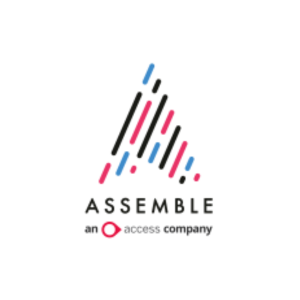Insights
INSIGHTS
All Topics
My Account
Breaking down the Agile Manifesto
01 Nov 2022by Jenny Lowthrop
We look into the details of the Agile Manifesto and what it means for charities today
The Agile Manifesto was created over 20 years ago when a group of people gathered to agree on some key principles for Agile working in a ski resort in Aspen. Though it was originally set up for software development, it is now used by a range of teams and whole organisations for digital projects, events, HR, and everything in between.
The Agile Manifesto is made up of four main lines and 12 longer principles that people in Agile look to follow.
The Agile Manifesto
It is important to remember that Agile by its nature is changeable and, though many follow the manifesto closely, ultimately it is about what works for the team and organisation you are working with.
It is hard to find an organisation that really is 100% truly Agile. There is often some bureaucracy or key documents or processes that are difficult to change, but by following it as closely as you can, you will see benefits to your projects and teams.
Many people see Agile as a mindset, rather than a methodology, so though some Agile methods such as Scrum seem quite prescriptive, it is really about thinking about your mindset about the key areas of the manifesto and how that can help change and improve the way you and your teams work together.
Here are the four key points of the manifesto and what they mean.
Individuals and interactions over processes and tools
This ultimately means the team comes first. We can sometimes get so focused on having the right tool, whether that’s a project management tool like Asana or Trello, or a suite of Microsoft software, the tool often doesn’t matter.
What matters is how the team works together and interacts. This is why Agile methodologies, like Scrum, focus on the meetings the team has together and ensure there is time and space to learn and improve.
Working software over comprehensive documentation
Most people can relate to ‘too much documentation’. In Agile the focus is on improving and building your project, whether that is software, a website or something else and not spending too much time on the documents that may not even get read.
It might be that instead of sharing big reports on the progress of a project, you show the key stakeholders the updates and changes instead and you only create the documentation that is really needed.
Customer collaboration over contract negotiation
This is one of the trickiest ones for charities to get right, especially if a project has strict funding requirements or you’re working with an agency and have a set budget.
However, as philanthropy becomes more open and flexible, or with key agency working parameters in place, it will become easier to say your project will change depending on feedback from customers and staff, to ensure it is the best it can be.
Instead you focus on the end goal and are not prescriptive on how you get there.
Responding to change over following a plan
This part of the manifesto could not have been more apt over the last two years of COVID-19, and with our constantly changing world, it is something more organisations are getting used to in all areas of work.
Sometimes people see Agile as something that has no plan, though in reality it’s lots of micro planning on a more regular basis. It means listening to your customers, clients, staff and stakeholders and feeding their insights back into your projects and changing accordingly to create the biggest impact.
It is important to remember that with the key values above it doesn’t mean that there are no contracts or plans, or documents or processes, just that the points on the left of each statement are valued higher than those on the right.
The 12 Agile Principles
Alongside the Agile manifesto sit 12 key principles of Agile. As Agile was originally set up for software, the word software appears throughout, though it is easy to replace this with a number of different things and make it work for your project or organisation.
The 12 principles go into a bit more detail on what the manifesto might mean in practice. For example, the principle, ‘Welcome changing requirements, even late in development. Agile processes harness change for the customer’s competitive advantage’, shows that no matter how late in the timeline of a project, it is important to keep listening to customers and stakeholders and feeding that into the project.
A favourite principle is ‘Simplicity – the art of maximizing the amount of work not done – is essential’. This is something Agile really helps with, as you are reprioritising the best actions to spend your time on, you can quickly start to cut out unnecessary work.
Some of the principles might seem outdated, such as ‘The most efficient and effective method of conveying information to and within a development team is face-to-face conversation.’ with most of the world working remotely or hybrid this seems out of date, though it could be argued face-to-face could include video calls.
Take a look at the full Agile manifesto and principles and see if having a more Agile approach in your charity could benefit your projects and work.
More on this topic
Recommended Products
Our Events
Charity Digital Academy
Our courses aim, in just three hours, to enhance soft skills and hard skills, boost your knowledge of finance and artificial intelligence, and supercharge your digital capabilities. Check out some of the incredible options by clicking here.




















